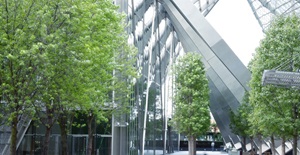Out-Law Analysis 5 min. read
Built environment key to meeting UK aims of reducing emissions
23 Jul 2021, 9:29 am
Making changes to the built environment remains a critical part of reducing the UK’s carbon emissions and adapting to climate change, but plans are beginning to lag behind upcoming challenges.
In recently published progress reports on adapting to climate change (272 page / 8.85MB PDF) and reducing emissions (224 page / 9.01MB PDF), the independent Climate Change Committee acknowledged the progress made by the UK to date on reducing emissions, but noted there was still a long way to go.
The committee pointed out that 92% of the population in England live in cities and towns, meaning that changes to the built environment are critical to delivering net zero emissions, and mitigating the effect of climate change on both the physical environment and the health of the population.
The committee found that temperature-adjusted buildings emissions in 2020 had increased by 4% on 2019 levels.
However, that increase was not uniform – the impact of the Covid-19 pandemic and the widespread shift to working from home meant that while emissions from commercial buildings dropped by around 4% on a temperature adjusted basis, emissions from homes increased 7%. The modest fall in emissions from commercial buildings, set against the high numbers of people working from home and the closure of shops and other premises, shows how much “background” energy is used by commercial buildings. The committee noted the scope to improve the ability to adjust heating and air conditioning to cater for partially occupied buildings.
The overall increase in emissions from buildings reflects both low insulation rates, and minimal improvements in boiler stock including installation of heat pumps in recent years.
The report identified “four necessary components of a policy package for the decarbonisation of heat in buildings: setting a clear direction, making low-carbon financially attractive, implementing enabling measures, and getting on with it”.
Clear direction
The committee said it was essential for the UK government to publish a heat and building strategy – one of a number of climate change-related policies which had been promised but not yet delivered and is now delayed until early autumn.
The Future Homes Standards for new buildings, where legislation is promised in 2024, and the proposed Future Buildings Standards for the commercial sector, as well as planning reforms, will also play a part. The committee also proposed that the new Building Safety Regulator’s remit should extent to climate change mitigation and adaptation issues in buildings.
The report noted that low-carbon heat will be critical. It pointed to initiatives such as the £270 million Green Heat Network Fund, which is currently being developed by the Department for Business, Energy and Industrial Strategy, and the Green Gas support scheme supporting biomethane as examples of positive initiatives which could help here.
Financially attractive
Making improvements to building stock that are financially attractive while mitigating climate change is challenging. The committee said in the wake of the failure of the Green Homes Grant voucher scheme, there was a need for “well-designed and well-executed” schemes that properly address the barriers to decarbonisation. The possibility of SDLT differentials for green and non- green buildings was raised in the report.
The issue of the split incentive between landlords and tenants of commercial property is well known and the proposed introduction of the requirement for an EPC B on all lettings of commercial property from 2030 is causing renewed interest in green lease provisions which seek to address this and which might include provision for a fair sharing of the costs of the required improvements.
The committee said there was a growing consensus on the need to tackle the imbalance between electricity and gas prices, with climate policy costs having to date largely been added to electricity prices. According to the report, there would be positive economic impacts that would arise from decarbonising the economy.
Enabling measures
The committee said climate change mitigation measures needed to be backed up with high-quality data and information that people can trust.
For example, energy performance certificates (EPCs) used in homes are seen as a key policy lever by government. The committee stressed EPCs must be high quality, consistent and “holistic”. They should address ventilation, damp and overheating issues and give appropriate weight to on-site energy generation such as solar panels and low carbon heat networks, as well as energy saving measures in place in the building.
The report also backed government plans for green building passports – documents which show a building’s environmental performance and any improvements carried out – noting that these would increase transparency. Measures such as this – which are well-defined and trusted by the property industry – could clearly be used to positively enhance the value of a building and help to attract new occupiers.
“Get on with it”
Attitudes of business are changing; the committee noted that the British Standards Institution Net Zero Barometer found that seven out of 10 businesses in the UK have made or are considering making a commitment to net zero, but 82% require more guidance if they are to achieve the target.
There are several ways in which those in the real estate sector can work to make changes. For example, drafting of leases will need to reflect or can drive the changes in attitudes of landlords and tenants. Landlords may want to reconsider the extent to which they rely on the tenant consent exemption for properties which don’t comply with the Minimum Energy Efficiency Standard Regulations.
Banks can also help to change attitudes with green finance, an area where the UK and London in particular leads the world.
The committee said government can also force a shift in attitudes and action, for example by imposing minimum standards in areas. The 2020 Energy White Paper confirmed that the non-domestic minimum energy efficiency standards will be EPC B by 2030.
In-use performance ratings and other environment rating schemes for larger properties can also help to raise awareness across the industry where information and particularly quality data is a major barrier to progress.
Why is this an issue
All of these measures are becoming increasingly critical with a rise in global temperatures and greater seasonal variances. Average winter temperatures are projected to increase by around 1ºC and rainfall by 5%, increasing the risk of flash flooding.
Meanwhile, average summer temperatures are projected to increase by 1.5ºC and rainfall to decrease by 10% with an uncertainty range of up to 3⁰C hotter and 30% drier. Summer rainfall, when it occurs, will be more intense, also increasing the risk of flooding; and hotter summers will increase the risk of excess deaths and affect productivity.
There is now a need to encourage the retrofitting of passive cooling measures, and the committee said the Heat and Building Strategy must consider overheating risks. Air conditioning is not the answer because it increases the consumption of energy.
A continuing sea level rise of around 10 to 30 centimetres or even up to 40cm could also increase the risks of coastal flooding in the UK under extreme high tides, and affect the functioning of coastal infrastructure.
Surface water flooding from rainfall intensity could be mitigated through the incentivisation of sustainable drainage systems, which the committee said should become mandatory. Alongside that the automatic right to connect to public sewers should end – whilst planning policy has for some time encouraged sustainable drainage, the ability to connect developments to public sewers is something which project promoters have relied on to date.
Planning reform will need to take account of climate change, with the planning system reflecting the ’net zero’ challenge and able to support adaptation and mitigation measures to stop overheating, stop building on floodplains and support biodiversity net gain.
Care will also need to be taken with changes to permitted development rights, as there is a risk that retrofitting commercial property into residential could lead to poor quality buildings, and a resulting need to retrofit climate mitigation or adaptation measures in the future.
Ultimately, the committee’s progress reports noted that “reducing emissions and adapting to climate change will require a whole-of-society endeavour”. Change will not be driven by the real estate sector alone. However, the reports made clear that the sector had a large part to play and outlined the key policy and legislation required in this sector over this decade.
Latest News
Editor's Pick
Out-Law Analysis
01 Jun 2021


